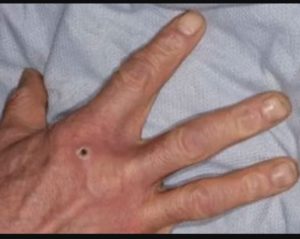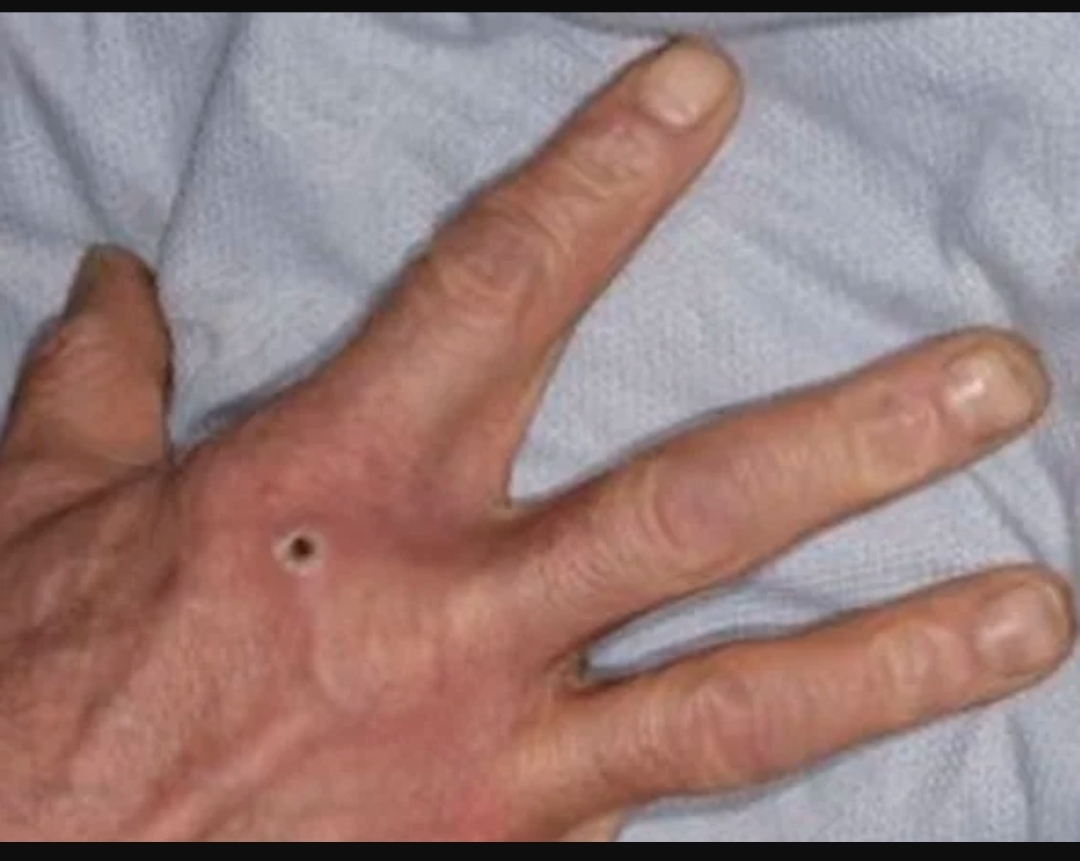For the first time in history, the world is facing an international epidemic of monkeypox.
The World Health Organization has declared a public health emergency, which improves coordination and sharing of resources and information between nations.
Doctors have detected more than 16,000 cases across the world, from Argentina to the United Arab Emirates.

U.K. Health Security Agency
On Friday, the CDC reported nearly 2,900 cases in the United States.
Such a geographic distribution suggests that “widespread human-to-human transmission is currently underway,” Dr Maria van Kerkhove of the World Health Organization said in June.
This transmission “probably has been going on for several weeks or even months,” she noted.
Reasearches
Two studies, published last month, show that the virus is spreading, undetected, in some communities in Portugal and the UK. Because, overall, the cases are not linked to each other or linked to a common place or activity.
Health officials therefore don’t know where people get it and many cases go undiagnosed, the scientists conclude.
Here in the United States, officials don’t know where one of the cases caught monkeypox.
“There could be community-level transmission.
And that’s why we really want to increase our surveillance efforts,” Jennifer McQuiston, deputy director of the Division of Pathogens and High-Consequence Pathologies at the Centers for Disease, said Friday.
Control and Prevention. . “I want to point out that this could happen in other parts of the United States.
” This gap in detection may be because symptoms of monkeypox in this outbreak may be much more subtle than in earlier cases.
As a result, health officials are asking healthcare workers — and people who may have been exposed — to be on the lookout for signs of monkeypox, especially signs of a rash.
But what does this rash often look like? It turns out that’s not what the medical textbooks show, says infectious disease doctor Donald Vinh of McGill University.
These images depict people with their trunks or hands covered in pus-filled blisters.
What’s happening in this outbreak may be much more subtle, say Vinh and other doctors involved in the outbreak.
In fact, some patients have only one or two small lesions that can easily be confused with lesions caused by several sexually transmitted diseases, such as herpes and syphilis.
“I think it’s actually supercritical,” Vinh says, “because you can see how these patients can be missed.
But they’re still contagious and can spread the disease.” Vinh helped treat 5 people with monkeypox at the McGill University Health Center in Montreal.
The outbreak in that city includes at least 50 cases, he said.
One morning earlier this summer, a colleague called to discuss a patient, newly diagnosed with monkeypox, who had only one lesion.
“The patient’s skin lesion that he took to confirm the diagnosis is extremely subtle.
It’s not what you see in Google photos of monkeypox,” he says.
In textbooks (and on many agency websites), monkeypox is described as an illness that begins with flu-like symptoms, including fever, fatigue, and a single swollen lymph node.
Then about a week later a rash appears, first on the face and then on the extremities.
This rash contains painful blisters that eventually fill with pus and scabs.
Finally, it can cover the trunk or the whole body.
So in classic monkeypox, described in textbooks, you’re supposed to have two phases,” Vinh explains.
But in this current outbreak, many people’s symptoms don’t fit that profile at all, say Vinh and several doctors involved in those cases.
To begin with, the rash is often not on the face or extremities at all.
Instead, it usually starts on the genitals or anus.
And sometimes it does not spread to other parts of the body. “You don’t have skin pox lesions from head to toe,” Vinh says.
“Instead, it’s localized to one area of the body, like the genital areas.
And some people only have one or two smallpox. So it’s not many.”
Sometimes it’s not even a pox,” he says, “it’s more of an ulcer or a crater.”
But even if only a small part of the body is affected, monkeypox isn’t necessarily a mild disease.
“The rash can be very painful, and some patients have reported needing prescription pain relievers to manage this pain,” says CDC’s Jennifer McQuiston.
“Wounds can also cause long-term scarring on the skin. ”
And what about those flu-like symptoms? Sometimes they don’t show up at all, Vinh and other doctors have found.
Or they can show up after the skin lesions appear.
Sometimes patients have only one swollen lymph node and sometimes no.
Some patients have inflammation of the rectum,CDC infectious disease specialist Agam Rao told JAMA.
In a Montreal clinic, a patient with monkeypox had a small lesion on his penis that was not painful:
“Never had another rash/lesion anywhere else.
Never had a fever,” Dr Sébastien Poulin, of Clinique l’Agora, explained on Twitter.
“The bottom line of this tweet will be: ‘We must have a high index of suspicion for ‘atypical’ cases of MonkeyPox,” he wrote.
Given this wide range of symptoms, health officials in the UK are casting a wide net when it comes to looking for new cases.
They ask people to be on the lookout for any type of rash.
The risk to the UK population remains low, but we ask people to be alert to any new rashes or lesions, which appear as spots, ulcers or blisters, on any part of their body.”
“While this advice applies to everyone, the majority of cases identified to date involve gay men, bisexual men and men who have sex with men, we ask these people especially to be aware of the symptoms, particularly if they have recently had a new sexual partner.”
In general, monkeypox is spread primarily through close contact with an infected person, including contact with the rash or lesions.
This contact can occur during sex, epidemiologist Mateo Prochazka explained in a Facebook video last week. UK and identifies as a gay man.
Because of the way we come into contact with each other during sex, usually skin-to-skin for a period of time, the risk of transmitting the virus to each other is higher,” he said. .
“And that means that gay people, especially gay people who have intense sexual networks, could see an increase in these cases simply because of their potential behavior and the number of contacts they have.
“So it’s less about sexual identity and more about sexual networks,” he added.
Although surveillance so far has focused on men who have sex with men, countries are now expanding the scope of their research, said WHO’s Dr Maria van Kerkhove.
“We should say, so far, that surveillance is biased towards [men who have sex with men] at the moment, and we are working with countries to expand this surveillance to other types of clinics, identification clinics, emergency services.”
